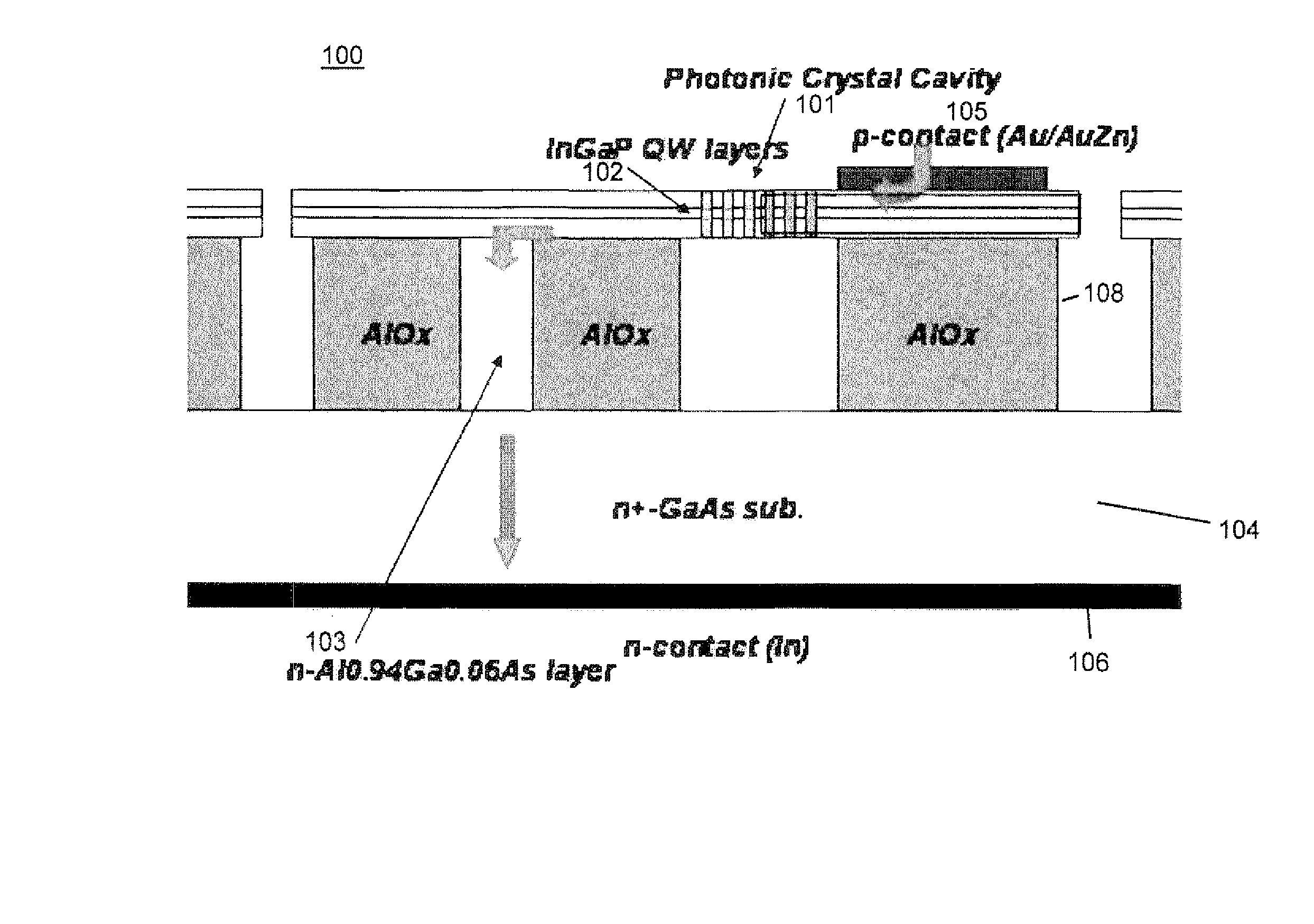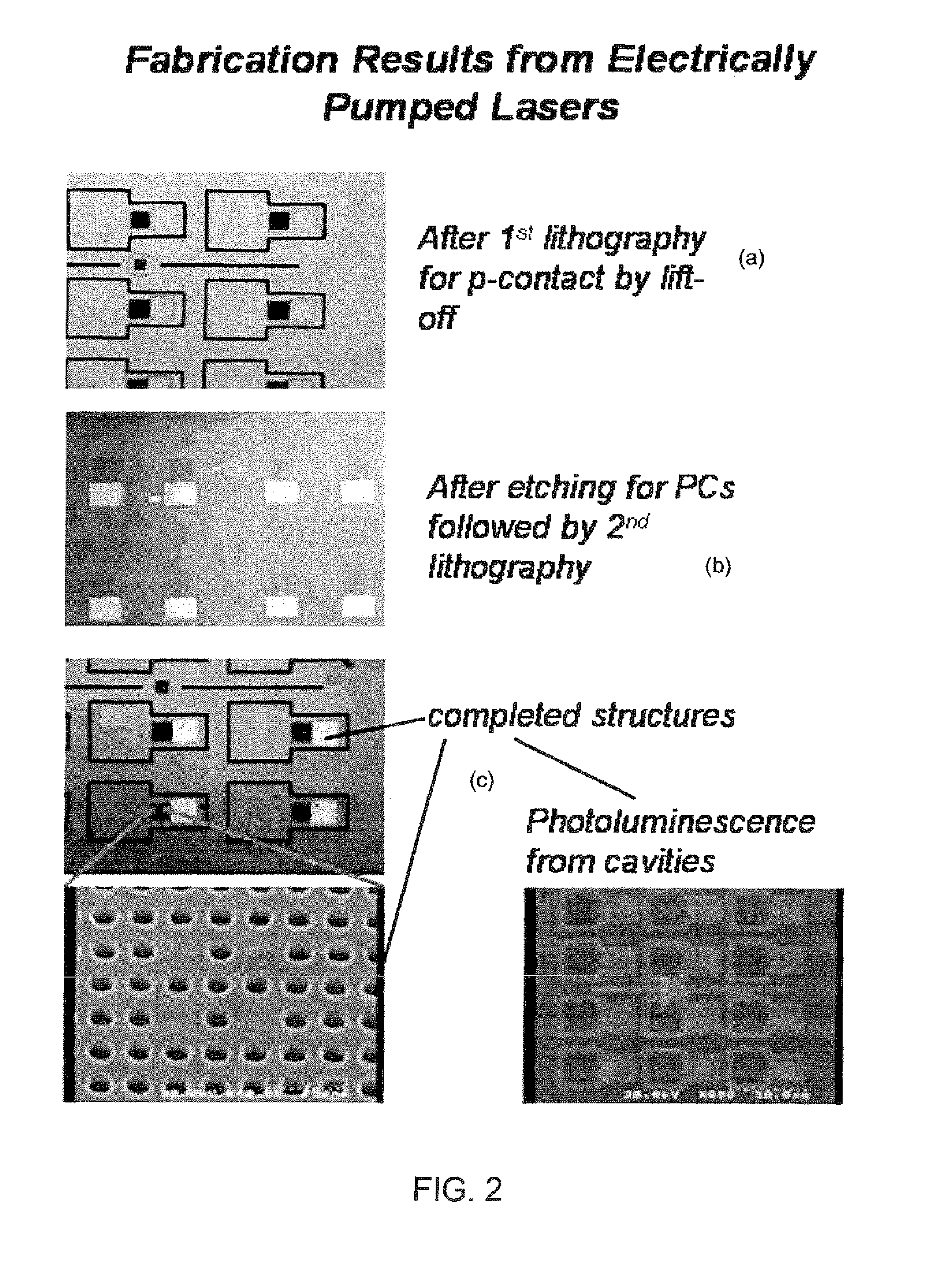Electrically pumped low-threshold ultra-small photonic crystal lasers
a photonic crystal laser and ultra-small technology, applied in the field of lasers and detectors, can solve the problems of large surface recombination loss, light re-absorption loss, and observed photonic crystal laser cavities, and achieve the effects of avoiding surface recombination loss, large strain gradient, and high band gap
- Summary
- Abstract
- Description
- Claims
- Application Information
AI Technical Summary
Benefits of technology
Problems solved by technology
Method used
Image
Examples
Embodiment Construction
[0035] Our photonic crystal laser design addresses traditional problems that have been encountered in photonic crystal lasers emitting at longer wavelengths by (a) avoiding Auger recombination through the use of high-bandgap light emitting quantum wells, (b) avoiding surface recombination through the use of strain confinement of carriers to within the laser cavity and (c) avoiding re-absorption of light by deliberately engineering differences in strain into the quantum wells within the cavity compared to the photonic crystal mirrors surrounding the cavity. FIG. 1 is a cross sectional diagram that shows one exemplary embodiment of a photonic crystal laser 100 according to the invention. The embodiment of FIG. 1 is an illustrative electrically pumped photonic crystal design where a laterally defined p-n junction excites quantum well emission in the photonic crystal, Photonic crystal cavity 101 includes InGaP QW layers 102. Photonic crystal cavity 101 can be supported by one or more al...
PUM
 Login to View More
Login to View More Abstract
Description
Claims
Application Information
 Login to View More
Login to View More - R&D
- Intellectual Property
- Life Sciences
- Materials
- Tech Scout
- Unparalleled Data Quality
- Higher Quality Content
- 60% Fewer Hallucinations
Browse by: Latest US Patents, China's latest patents, Technical Efficacy Thesaurus, Application Domain, Technology Topic, Popular Technical Reports.
© 2025 PatSnap. All rights reserved.Legal|Privacy policy|Modern Slavery Act Transparency Statement|Sitemap|About US| Contact US: help@patsnap.com



